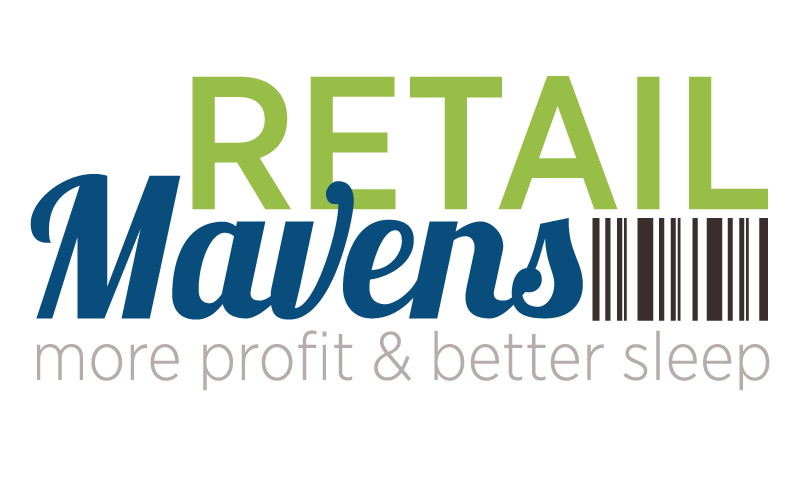Managing cash flow is one of the biggest challenges retailers face. It’s not just about how much money is coming in—it’s about making sure it’s there when you need it. Because let’s be real: unexpected expenses will pop up, slow seasons will happen, and if you’re not prepared, it can feel like you’re constantly playing catch-up.
But here’s the good news: with a few smart strategies, you can take control of your cash flow, plan for expenses, and build reserves—so you’re never caught off guard. Let’s dive in!
A Misguided Measurement of Success
Many retailers measure their success by looking at the last number on their profit and loss statement—the profit number. But true success isn’t just about profitability; it’s about maintaining positive cash flow. You can be profitable on paper and still struggle to pay your bills. If you’ve ever felt frustrated that your business showed a profit but you couldn’t cover expenses, you’re not alone. This happens when cash flow isn’t properly managed, and it’s why focusing on this is crucial.
Why Positive Cash Flow Matters
You know that feeling when there’s money in the bank, bills are covered, and you can confidently invest in your business? That’s the power of positive cash flow. It ensures you can pay your team, restock inventory, cover rent, and still have money left over for growth.
When cash flow is tight, stress skyrockets. But when you have a system in place, you’re making decisions from a place of clarity instead of panic. And that changes everything.
Understanding Your Cash Flow Cycle
Almost all stores experience negative cash flow months at some point. Instead of being caught off guard, the key is to be prepared. Start by identifying when your cash flow dips. For most retailers, this happens at the beginning of a season when you have to bring in inventory before sales peak. For example, gift stores often experience a cash crunch from mid-October to mid-November, just before Black Friday (fun fact: Black Friday got its name because that’s when cash flow would go from red to black for retail stores). Knowing when things get tight allows you to proactively build a reserve.
Tactical Financial Strategies to Stay Ahead
Want to stop the feast-or-famine cycle? Start building a cash cushion with these steps:
- Create a Cash Flow Projection
- A projection helps you anticipate shortfalls and plan accordingly.
- If you’re unsure how to create one, reach out for help—we do this for our clients all the time.
- Set Up a Reserve Fund
- Every day, take 2% of your sales and move it into a separate reserve account. It may not seem like much, but trust me—it adds up fast.
- This creates a safety net for unexpected expenses before they happen. Building a financial cushion to cover slow months without relying on credit.
- Manage Your Sales Tax Separately
- Sales tax is not your money—it’s the government’s. So instead of letting it mix in with your regular funds (and then scrambling at tax time), transfer collected sales tax into a separate account immediately. You’ll never have to stress about it again.
- We recommend Relay Bank for easy automatic allocations.
- Negotiate Vendor Terms
- Negotiate payment terms with vendors—request net 60 to 90 days whenever possible.
- Avoid COD (cash on delivery) terms. COD kills cash flow by requiring upfront payment before you’ve had time to sell the merchandise.
- Change your credit card due dates to align with your cash flow cycle.
- Review Expenses Annually
- On your store’s anniversary, check your credit card rates and insurance rates to see if you can get better terms.
Boost Revenue During Slow Months
Every store has slower seasons, but that doesn’t mean you have to sit back and hope for the best. Get proactive with creative ways to keep cash flowing:
- Host in-store events or workshops – Give customers a reason to visit your store!
- Offer subscription boxes or curated bundles – Recurring revenue is a game-changer.
- Sell online courses or tutorials – Share your expertise in a new way.
- Collaborate with local businesses – Partner up for cross-promotions and new exposure.
The Biggest Mistake: Relying on Loans First
When cash flow gets tight, it’s tempting to take out a short-term loan or hit that Shopify capital button. While financing can sometimes be necessary, it should never be your first option. Before taking on debt, implement these strategies to build financial resilience.
Your Millie Moment
Start small, stay consistent, and watch the impact grow:
✅ Identify the months when cash flow feels the tightest.
✅ Create a simple cash flow projection to anticipate expenses.
✅ Commit to setting aside 2% of daily sales into a reserve account.
✅ Test one creative income idea during your next slow season.
Your future self (and your bank account) will thank you!
Need Help Managing Cash Flow?
If financial challenges have been holding you back for years, we’re here to help. Our Profit First and inventory-powered strategies help retailers manage cash flow, create projections, and get ahead financially. Apply to work with us here and we’ll guide you to the best program for you..
Cash flow struggles are normal—but staying ahead of them is what makes a retailer truly successful.


